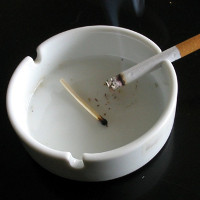Until now, people have been confused that glass is a liquid. But that’s not really correct – glass is essentially an amorphous solid. Normally, when a matter goes from liquid to solid, the previously free-floating atoms “line up” into a cramped crystal structure. However, that does not happen with glass: its atoms “freeze” in an chaotic state.
Or at least that’s the case often. In a new study, scientists have discovered a form of glass where atoms exhibit a rather complex behavior, never seen in bulk glass before. These atoms can move, but cannot rotate.
The team discovered this in a sample system of colloidal suspensions. This mixture is made up of large solid particles suspended in a liquid, making it easy for scientists to observe the physical behavior of atoms or molecules. Normally, these particles are spherical in shape, but in this experiment the team used elliptical particles to be able to tell which direction they were pointing.

Liquid glass is something that has been predicted for decades.
The researchers tested various condensed forms of particles in liquids, monitoring how they moved and rotated. Finally, they discovered that at high concentrations, the particles would prevent each other from rotating, but they would still be able to move, creating a state known as liquid glass.
” At certain levels of particle density, directional motion is stopped, while translational motion continues, leading to glassy states in which particles gather in clusters to form localized structures. in similar directions ,” said the study’s lead author, Andreas Zumbusch.
The team says the behavior they observed stems from two types of glass motion interacting with each other. Liquid glass is something that has been anticipated for decades, and the new results suggest that similar processes may also play a role in other glass-based systems.
” This is something particularly interesting from a theoretical perspective ,” said study author Matthias Fuchs. “Our tests have yielded evidence of an interplay between the significant fluctuations and the cessation of motion of the glass that the scientific community has long sought.”

